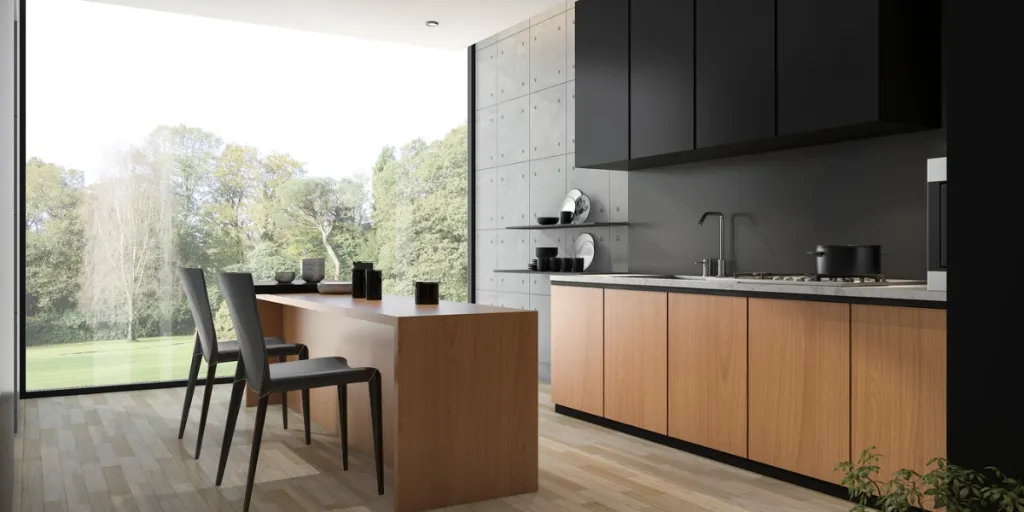The most trendy kitchen flooring options are aesthetic, can handle spills and constant traffic, and are easily cleaned. There are various kitchen flooring options—from luxurious vinyl to classic hardwood’s comeback and eco-friendly options like reclaimed wood and bamboo.
Each type of flooring suits different interior design styles and budgets, while the most suitable material depends on one’s kitchen use. This guide explores the top seven trends that will transform your kitchen in 2024.
Table of Contents
Kitchen flooring trends at a glance
Most trendy kitchen floor options
Popularity of eco-friendly kitchen flooring trends
Summary
Kitchen flooring trends at a glance
Grand View Research predicts the flooring market will hit USD 398 billion by 2030, growing steadily at over 5% yearly. While this includes all floors, luxury vinyl tile (LVT) is the most sought-after option for kitchens since it’s affordable, durable, and even perfectly mimics wood or tile.
The report also highlights a growing interest in waterproof flooring, perfect for kitchens as it tackles spills better. This aligns with the improvements in waterproof LVT, making it an even more attractive option.
Most trendy kitchen floor options
The most popular kitchen flooring options include luxury vinyl, laminate, ceramic tile, and hardwood.
Luxury vinyl flooring
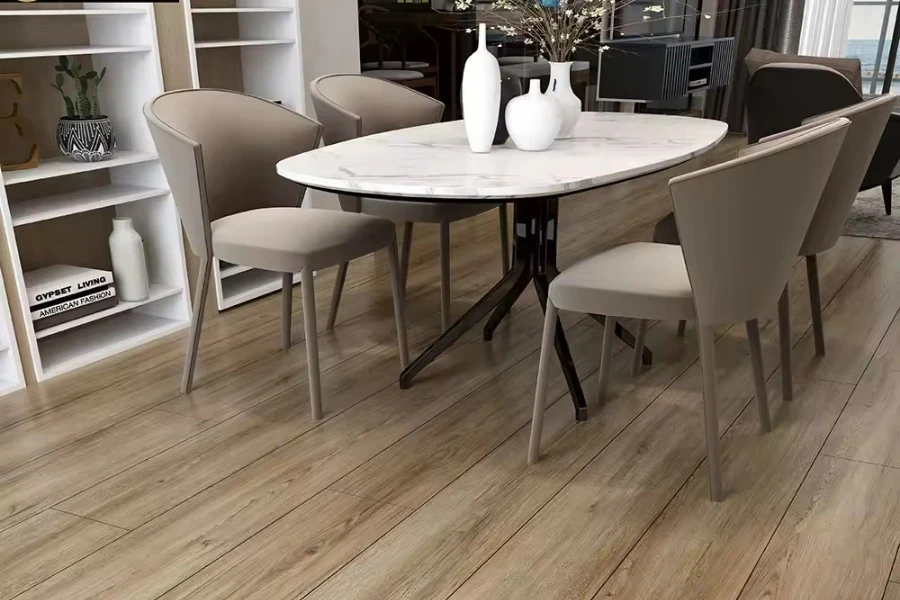
Luxury vinyl flooring is a trendy kitchen flooring owing to its durability, water resistance, and easy cleaning. With a tough core, protective layer, and decorative top (mimicking wood or stone), luxury vinyl shrugs off scratches, dents, and spills.
Easy click-lock installation and a variety of styles at budget-friendly prices make luxury vinyl tiles (LVT) and planks (LVP) a top choice for kitchen renovations. The downside of luxury vinyl flooring is that it can be susceptible to fading or discoloration over time.
Ceramic tile flooring
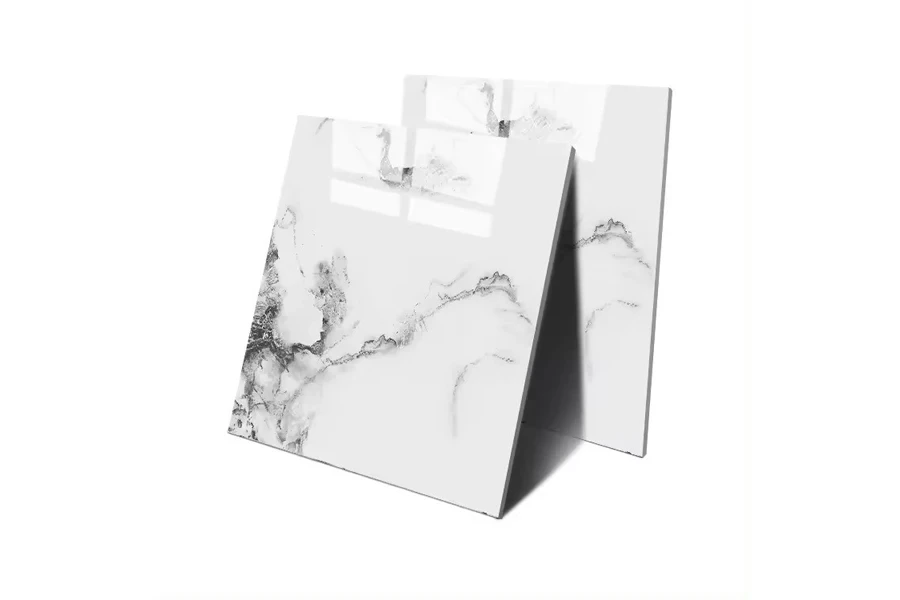
Made from fired clay, ceramic tile is highly durable and shrugs off scratches, spills, and everyday wear and tear. Plus, its natural water resistance makes it ideal for moisture-prone kitchens. You can create a truly personalized look with a vast array of colors, patterns, and sizes—from mimicking natural stone to achieving a modern vibe.
Cleaning ceramic tiles is easy, thanks to the glazed finish that repels stains and odors. With its durability, practicality, and design options, ceramic tile remains a classic kitchen flooring choice.
Hardwood flooring

Hardwood brings a warm, natural look that complements most kitchen designs. Made from solid wood planks like oak or maple, these floors are known to last. A well-installed hardwood floor can grace your kitchen for decades with proper care.
Cleaning is easy, too—sweeping, mopping, and occasionally refinishing keeps them looking their best. Hardwood can boost your home’s resale value, as it’s a high-end touch.
However, hardwood is more delicate than other flooring options. Moisture, spills, and heavy traffic can take a toll on the flooring, requiring more upkeep over time.
Laminate flooring
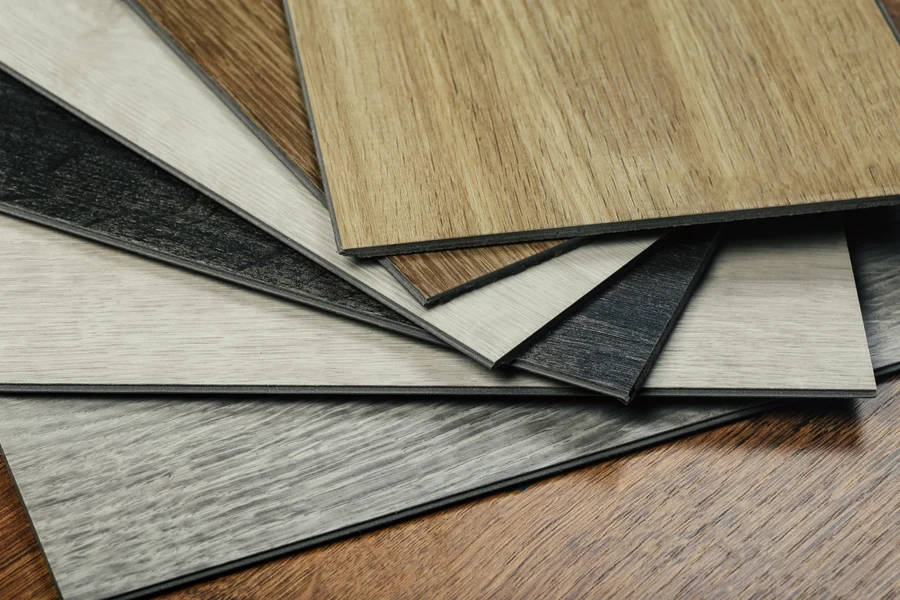
If you’re looking for a budget-friendly alternative to hardwood or tile in your kitchen, laminate is worth considering. Made with a tough top layer, a decorative layer that mimics wood or stone, and a supportive core, laminate can easily handle scratches, dents, and everyday wear and tear.
Plus, installation is generally easier than hardwood or tile—often using a click-lock system for a clean finish. You can achieve the look of natural wood or stone at a fraction of the cost, with less maintenance required. Laminate is also water-resistant, so spills in the kitchen won’t be a worry.
Popularity of eco-friendly kitchen flooring trends
Homeowners are more aware of the environment, so eco-friendly flooring options are gaining traction. These options are not just good for the planet; they’re beautiful and durable, making them an excellent choice for your kitchen.
Reclaimed wood flooring
Sourced from old barns or forests slated for demolition, this eco-friendly option reduces environmental impact. Reclaimed wood planks have a rich patina, knots, and imperfections, adding a touch of rustic charm.
Reclaimed wood adds a unique touch of history and character to your kitchen. Plus, it’s surprisingly durable—perfect for handling the wear and tear of a busy kitchen.
Bamboo flooring
Bamboo flooring is becoming a popular eco-friendly choice for kitchens. Often mistaken for wood, this is a fast-growing grass, making it a highly renewable flooring option.
Bamboo flooring is known for its exceptional hardness and durability. Being naturally resistant to scratches and dents makes it practical for busy kitchens. Besides, bamboo flooring tends to be cheaper than traditional hardwood options while still offering a beautiful and natural aesthetic.
Cork flooring
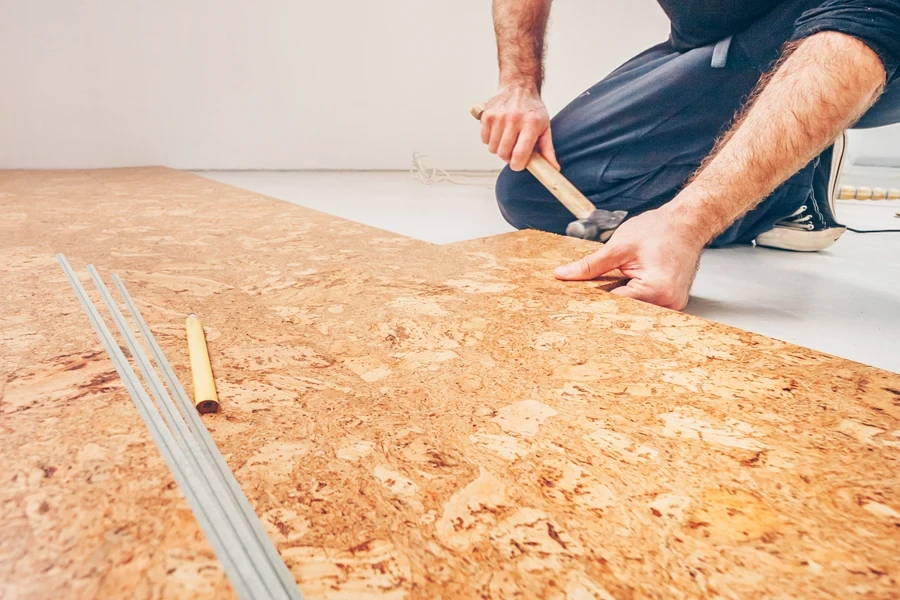
Harvested from cork oak trees, cork flooring is naturally water-resistant, antimicrobial, and comfortable underfoot. It boasts thermal and acoustic insulation properties, making it a practical and energy-efficient choice.
As a biodegradable material, cork can be recycled at the end of its lifespan, minimizing its environmental impact. With various colors and patterns available, cork floors create a unique and visually appealing kitchen design.
Summary
From the super durable and water-resistant luxury vinyl to timeless hardwood or eco-friendly options like reclaimed wood and bamboo, each kitchen flooring option has its perks. The key is finding a perfect fit for your budget, style, and needs.
